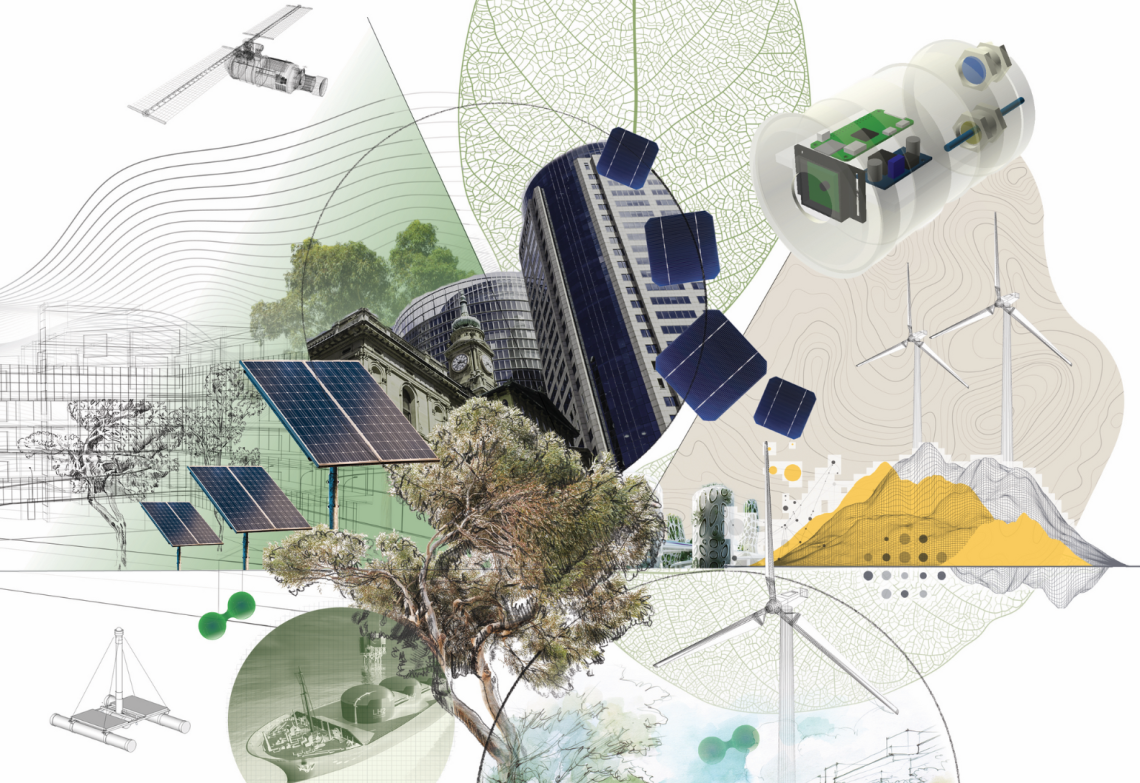This year’s World Engineering Day for Sustainable Development is 4 March and, to celebrate, create is shining a spotlight on engineers who lead with innovation, transformation, collaboration and passion.
In the Australian engineering profession, you don’t need to look far to find examples of excellence and innovation in sustainable practices, processes, products and outcomes.
To address climate change, one of the greatest challenges of our time, engineers must be at the centre of every solution. Across sectors, including construction, renewable energy, urban design, ocean management, conservation and more, engineers are responding to the call.
This vital role is celebrated annually on 4 March as World Engineering Day for Sustainable Development. The theme for this year is “Engineering innovation for a more resilient future”.
“It provides an opportunity for us to reflect on the critical role that engineers play in shaping our world for current and future generations,” said Engineers Australia Chief Engineer Jane MacMaster. “In Australia, engineering has been instrumental in shaping our cities, infrastructure, and industries and has helped us to overcome some of the challenges and pursue some of the opportunities that come with living in a vast and diverse country.
“From building the iconic Sydney Harbour Bridge to developing cutting-edge technologies for renewable energy, engineers have played a critical role in shaping the nation. Australian engineers have brought new technologies to the world, from Wi-Fi and bionic ears to software and aerospace systems.”
MacMaster said the complex and interconnected sustainability challenges facing the world will require engineering solutions at an unprecedented pace and scale.
“To ensure that engineering continues to play a crucial role in shaping a more circular and sustainable economy and a more equitable world for all, it’s important that we support the engineering community,” she said.
“This includes investing in engineering education and research, promoting diversity and inclusion in the profession, and encouraging the next generation of engineers to pursue their passions and make a positive impact on the world.”
For this year’s World Engineering Day for Sustainable Development, create profiled five engineers using their knowledge and experience to protect and improve the world we live in.
Adding value to buildings
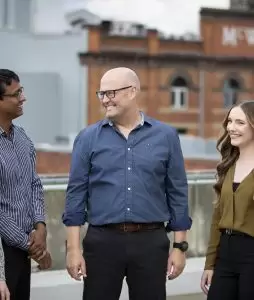
Paul Easingwood
Director, Structures and Façades, Bligh Tanner
When Paul Easingwood CPEng FIEAust is brought on to a structural or façade-related project, it’s often at a time that the building is reaching the end of its design life.
A less inspired engineer might suggest a lick of paint, a new façade to hide the blemishes, or a basic renovation of the interior spaces.
Easingwood prefers a more thoughtful, holistic and sustainable approach.
“It’s really about trying to be smart about how we can rejuvenate the building whilst adding real value,” he said. “How can we adapt and reuse, feeding into the sustainability consideration? What can we do to ensure the building is worth a lot more in the future?”
Easingwood and his team at Bligh Tanner are currently asking those questions of the team managing the rejuvenation of Brisbane’s Blue Tower and Gold Tower, both for Marquette Properties.
“We’re going through the process of how they add value,” Easingwood said.
“These are $300 to $400 million assets, and the owners are going to spend $20 million or more on them. Done right, in five years they will have improved their asset value well beyond that.”
Easingwood has recently completed a major project at No1 Anzac Square in Brisbane, as part of the development team for AsheMorgan.
Three buildings were brought together into a single office precinct, united by an impressive glass atrium, 6000 plants, two trees, large-format marble floors, 180 m2 of green walls and high-class end-of-trip facilities.
Most importantly, as the atrium and facilities were significantly upgraded and an entire city block was transformed, as much of the existing buildings as possible was kept original.
“The mechanical systems largely remained unaltered,” he said. “The large amount of concrete volume that constitutes the structural frame remained, apart from small pieces we cut out here and there to add new sections. That concrete was recycled offsite.”
By stripping off certain elements and modernising and refreshing facilities that appeal to the end user, there’s no need to dig holes in the ground, take away truckloads of dirt, or pump tons of concrete.
“That makes it a special sort of project, the sort of project we really enjoy working on,” Easingwood said.
The idea of greater use of engineered timber in buildings, as is becoming increasingly common in Europe, also excites Easingwood.
An engineered timber annex building at the ground level of a rejuvenated building can completely transform that building and its surrounds, he said.
“It can turn a building into a real showpiece,” he said. “That type of development, with an energy efficient, high green-star rating, can turn an older building into a front-cover-of-a-brochure kind of release.”
Having the confidence to make such suggestions to a client, to stamp his authority on a building rejuvenation project, is what motivates Easingwood.
“I always had a very strong interest in not being subservient to the architect or subservient to the client and saying, ‘Yes sir, we’ll design a steel frame because that’s what you’ve asked for’,” he said.
“As engineers, we go through a lot of training. We’re problem-solvers fundamentally, and we can add value to clients.”
Designing a solar future

Jefferson Lam
PhD student, Monash University
Whether he’s surfing, hiking, camping or picnicking with friends, Jefferson Lam loves being outside. Now, preserving the environment he enjoys so much drives his career choices.
Lam is in the first year of a PhD focusing on developing the next generation of solar panels.
“There are lots of people researching ways to maximise efficiencies, stabilities and scalability,” he said.
“But solar panels are not just this wafer or cell that absorbs light and converts it into energy; they need protection from the external environment.
“My research looks at the whole panel. Solar cells need to be protected in encapsulation materials so that they can survive harsh outdoor conditions and extreme weather events. As a materials engineer, I’m trying to work with mixes of different materials — known as composite materials — to improve this encapsulation.”
Why is this important? Encapsulation materials play a significant role in the durability, lifespan and recyclability of the panel, Lam said. Most solar panels currently use a design that is decades old, limiting flexibility, accessibility and recyclability.
“More and more we are beginning to realise that maybe this isn’t the formula: having thick, heavy glass covers; poorly recyclable glue; or a back sheet that contains fluoropolymers. These components are outdated,” he explained.
Lam’s inspiration for new encapsulation design, perhaps unsurprisingly, comes from nature.
“What does nature do to create super-sustainable, recyclable, modular solar harvesting components?” he asked.
“The answer is right there in plant leaves. They need to be efficient harvesters of light. They can’t be dirty and are self-cleaning. They must control the amount of moisture getting in, repel predators, shield their cells from UV light and more.
“So, what I’m doing in this first part of my thesis is looking at the top layer of leaves, the cuticle, to see what properties can be applied to solar panels to improve lifespan and address the three killers of solar panels: humidity, UV light and temperature.”
An important consideration is to enable a new, more efficient manufacturing process.
Current processes require the production of one panel at a time, as each must be encapsulated individually.
“I envision a future where we have rolls of encapsulant and rolls of solar cells forming a continuous process,” he said.
“That would make production a lot cheaper, faster and cleaner. The reduction in weight would also reduce transport, labour and supporting materials.”
The lightweight nature of the new generation of solar panels would also mean they could be used in more flexible applications: on façades and windows of buildings, and in hilly areas.
“The world is a very beautiful place and I want to help to preserve that,” said Lam, who also majored in Chemistry and minored in Ecology and Conservation Biology.
“I feel that this research topic is a really good fit that combines both my passions and my background knowledge. I am super excited to continue on.”
Leading the way in hydrogen
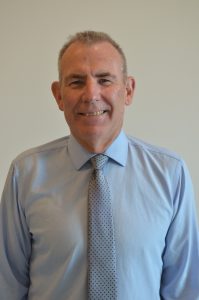
Phil Woodford
Technical Lead, CNF & Associates
Numerous world firsts were achieved during the construction of the Hydrogen Energy Supply Chain (HESC) Project.
First was the fact that Australia’s hydrogen industry was finally exporting liquid hydrogen.
Then there were the facilities at the Port of Hastings, designed and developed to enable the liquefication of hydrogen gas and its transport to a ship for export.
Finally, there was the ship on which it was exported, the Suiso Frontier, which was built from scratch as the world’s first hydrogen carrier.
In its commercial phase, HESC is projected to reduce annual global CO2 emissions by 1.8 million tonnes — the equivalent of removing 350,000 cars from the road.
Australian engineers will need to contribute a lot of expertise if the nation is to achieve its goal of becoming a global leader in hydrogen production and export, but much of this knowledge Australia’s engineers actually have already.
“One of the big challenges in any project is bringing along the community with you, whether it’s the engineering community, the general community or the industrial community,” said Phil Woodford CPEng who, as Technical Adviser for Kawasaki Heavy Industries’ hydrogen terminal at the Port of Hastings, helped build the world’s first liquefied hydrogen export terminal.
“But we’ve known how to handle liquid hydrogen commercially for decades, and gaseous hydrogen for over 100 years. Putting that knowledge and experience together, then convincing the broader community that it’s safe and reliable and of no risk to them, that’s the challenge.”
Hydrogen is simply another industrial gas, Woodford said. It has certain characteristics, but if we approach its production and transport the same way we would any other industrial gas — methodically addressing and mitigating each risk — then Australian engineers and all stakeholders, including local communities, will develop confidence around using hydrogen to store energy.
“We also need to offer electives relevant to industrial gases, relevant to hydrogen and relevant to cryogenics at university,” he said.
“If we’re serious about global warming, and if we’re serious about not burning fossil fuels, we can only use renewable energy — wind or solar — to power electrolysers [which use electricity to split water into hydrogen and oxygen]. We have to produce hydrogen that way.”
Electrolysers are beginning to ramp up in size, Woodford said.
But “farms of electrolysers” will be needed before it will be possible to produce hydrogen on the scale required to establish a globally recognised hydrogen export industry.
Australia will also need consistency of messaging from government around energy policy and export vision, and greater technological self-confidence from Australian engineers.
“That also means Australian superannuation funds and companies investing in sunrise industries that are going to grow,” Woodford said.
“For that, we need engineers leading the decision-making process. It requires engineers who have an appetite for risk, who understand the risk and who have the confidence to address that risk.”
Multi-disciplinary, collaborative solutions
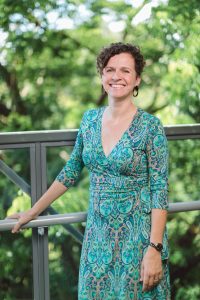
Nerida Horner
Group Leader, Landscapes and Ecology, Northern Australia Science Consultant, CSIRO
Nerida Horner is a multi-disciplinarian with a passion for narrowing the gap between academic research and real-world implementation, particularly when it comes to sustainability challenges.
“Very early on I could see there were few environmental problems that existed in a vacuum,” she said. “Most were also societal problems.”
This knowledge was confirmed during a period of more than a decade during which she worked in water demand management with remote Indigenous communities.
Her achievements include numerous environmental challenges she helped solve in operational and leadership roles in utility, non-governmental organisations, research and government across the Northern Territory, Western Australia and Queensland.
Horner’s most recent expression of this lay in fostering, creating and leading the inception of the Darwin Living Lab (DLL), a 10-year collaboration between the CSIRO, the federal and territory governments, and the City of Darwin.
The virtual innovation lab applies research with experimentation on the ground in Darwin, seeking to prepare the city for a more liveable, sustainable and resilient future in the face of a changing climate.
Her role in the DLL involved bringing together experts from government, academia, industry and community to co-create powerful solutions around resource efficiency and urban design, and to respect Indigenous knowledge in mitigation of the effects of a warming climate.
In this role, Horner’s knowledge and experience in environmental engineering, utilities, water and waste management, sanitation and Indigenous engagement have very much been used.
“When greening a city to make it more climate-change resilient and more liveable, we must consider its context, the climate 20 years from now, availability of water and energy, and more,” she said.
“Achieving sustainability and resilience will rely on sound engineering principles with relevance to the human and environmental context.”
Horner has been managing such conversations on behalf of the CSIRO in Darwin for more than seven years and, recently, in her move to North Queensland 18 months ago.
“My role in northern Australia is an outreach and brokering role, listening to organisations to identify their challenges and to see how the CSIRO and our collaborators can help them solve those challenges,” Horner said. “We can then develop collaborative approaches more impactful than the sum of their parts.”
Major innovations have included influencing new building design and informing strategies for heat mitigation, climate change and waste management.
“We have developed an app to better manage heat stress for outdoor workers,” she said.
“We’re quantifying progress on greening initiatives with satellite methods and are bringing local Larrakia knowledge to the table.”
In Horner’s opinion, the most impactful innovation has been the establishment of a “motivated innovation community”, backed by three levels of government, deep community support and the CSIRO.
“Practitioners, policymakers in government, scientists and engineers have previously made decisions individually and from within their own organisations,” she said.
“The DLL supports them with ready access to a local network of experts, interested community and a direct link to the CSIRO and our national [research and development] capability.
“Engineers have a really good appreciation of what we must draw from to solve problems right now. We’re often responsible for implementing technical solutions in a real-world scenario. But no matter who is involved, the sharing of information and the social mandate for change are the essential ingredients for success.”
Simplifying and sharing
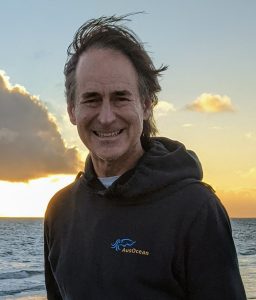
Alan Noble
Founder and CEO, AusOcean
How does an electrical and electronics engineer who spent more than a decade with Google use his knowledge and experience to launch a business that solves ocean science challenges?
“I’m glad you asked,” said Alan Noble FIEAust.
“To answer, I have to go back in time.
“My career started out in the semiconductor industry in computer-aided engineering in Silicon Valley. I ended up working for a couple of tech start-ups and eventually came back to Australia, with a few more tech start-ups. Then I worked for Google.
“The theme for all of those years was technology in its various forms.”
Technology, he came to realise, was of value because it enabled businesses to do more with less and to scale more quickly.
When Noble began having conversations with people in marine biology, he realised they were not using technology as well as they might.
That wasn’t necessarily their fault; they had the desire, if not the knowledge. But the only technology available to them was extremely expensive.
“That tech was over-engineered for extreme depths and extreme pressures,” he said. “Even a simple sensor, like a salinity sensor — that I could design and build for a couple of hundred dollars — ended up costing thousands.”
Noble realised he could make these devices far more affordably. More importantly, he could also design an open-source system that made the data from, and design of, those devices accessible to all scientists.
In 2017 he took long-service leave to do just that. AusOcean was born.
Using low-cost technology, such as Raspberry Pi computers, he married his belief that technology could be a real differentiator with his long-term love of oceans.
“An early project was one in South Australia: an oyster reef restoration project,” Noble said.
“They were desperate to put in place monitoring technology but were struggling with how to do it. We developed low-cost underwater cameras, hydrophones and speakers for them. It was a technology and engineering problem, albeit with a conservation and restoration objective.”
AusOcean now operates in the non-profit space, looking at problems technology can help solve. Good engineering has played a leading role in the organisation’s success.
“We spend a lot of time ruggedising low-cost electronics so it can live underwater,” he said.
“We’re very fond of PVC.
“Early on, we also moved away from air-filled housings to oil-filled housings, because air-filled is only fine until you spring a leak. Then, it’s very unforgiving. But oil-filled can be designed to be pressure compensating, so even with some water ingress, you can avoid a catastrophic failure.”
Noble encourages every engineer in every field to consider the impact they’re able to have on sustainability.
“I would encourage engineers, especially young engineers, to be thinking about impact,” he said.
“Ask the question, ‘If I make this design choice, it will have a product impact but could it have a broader impact? What impact is it having on the environment? Could it affect sustainability?’
“I would like to see more engineers, when they tackle problems, thinking about impact.”

